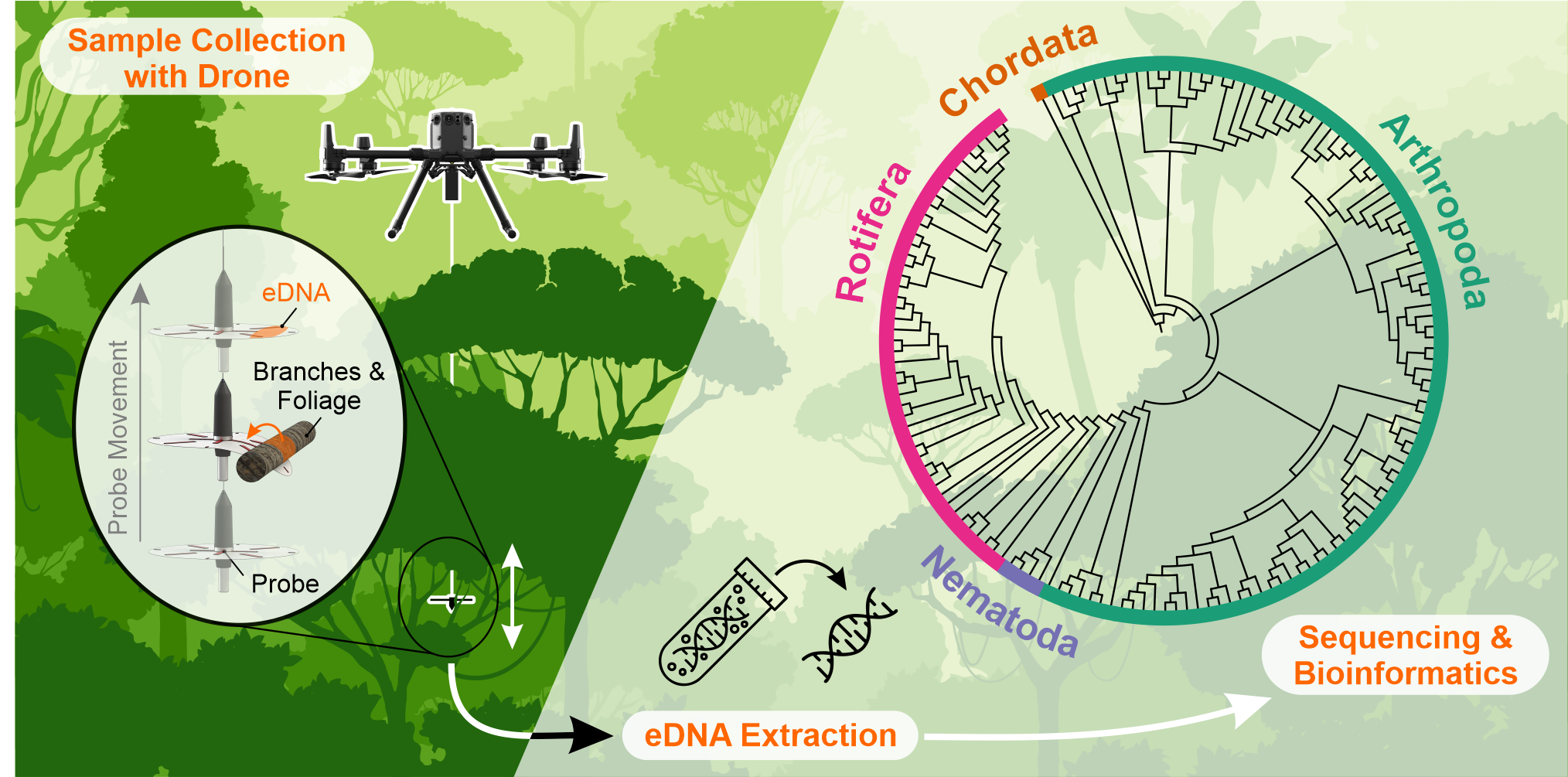eDNA from tree canopies – New Article published in Environmental Science & Technology
We detected over 152 genetic groups from our drone-based eDNA sampling carried out in the Singaporean Rainforest last year.

Building upon our external page previous work on drone-based environmental DNA (eDNA) collection, we present a novel method for collecting eDNA from rainforest tree canopies using unmanned aerial vehicles (UAVs). The eProbe system allows sampling across all forest strata, from the canopy to the forest floor. The tethered probe, designed to gather genetic material on its surface, is fully automated and can be deployed with the push of a button. Integrated into an off-the-shelf commercial drone, the system is not only safe but also user-friendly, requiring minimal piloting experience.
The sampling approach was validated in the field during the XPRIZE Rainforest Semi-Finals, where ten samples were collected. Notably, three of the samples successfully penetrated all forest layers, allowing the identification of both arboreal and ground-dwelling organisms. In total, 152 unique genetic groups were detected through eDNA metabarcoding. The method’s efficiency and ease of use mark a significant advancement in biodiversity monitoring, providing a scalable solution for studying hard-to-reach ecosystems.
The research highlights the potential for drone-based eDNA sampling to revolutionize biodiversity surveys in remote and complex environments, with significant implications for conservation efforts. By simplifying the process of collecting representative eDNA samples and reducing the need for highly skilled personnel, this technology offers an exciting new tool for ecological monitoring and environmental research.
To read the full article, click external page here.